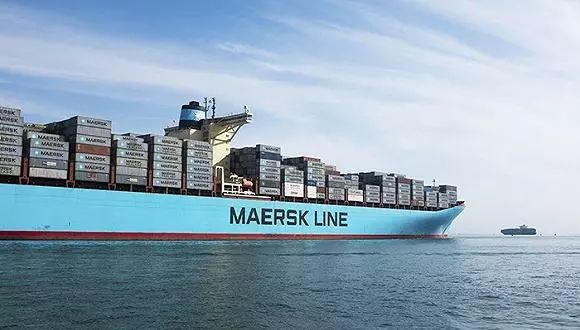中国到欧洲多地区专业航线 国际海运 一条龙服务
2019年5月15日 in 深圳广州国际货运公司

中国-欧洲
欧洲航线是世界上最繁忙的国际航线之一。在地理上,它分为五个地区,即日德兰半岛和斯堪的纳维亚北欧地区。中欧,波罗的海以南和阿尔卑斯山脉以北;西欧一地区,位于大西洋沿岸和西欧附近岛屿上;东欧的东欧;东欧。和南欧,即阿尔卑斯山以南的巴尔干半岛、亚平宁半岛、伊比利亚半岛和附近岛屿,大西洋南部和东部的海是地中海和黑海,西大西洋地区,该地区在国际航运通常分为地中海路线,过去被称为西方线。
在国际航运中,这条航线可分为欧盟关键航线和北欧波罗的海航线,主要由法国、英国、荷兰、德国、瑞典、芬兰、比利时、丹麦、挪威、爱尔兰和一些内陆**组成。这条航线的主要港口有:安特卫普-安特卫普、不来梅-不来梅、费利克斯托-费利克斯托、汉堡-汉堡、勒阿弗尔-勒阿弗尔、鹿特丹-鹿特丹、南安普顿-南安普顿等港口。北欧波罗的海航线:阿尔胡斯-阿尔胡斯-阿尔胡斯-哥本哈根、哥德堡-哥德堡、科特卡-科特卡、奥斯陆-奥斯陆等港口。此外,费利克斯托是英国最大的中转港,汉堡和鹿特丹是欧洲最大的中转港之一。欧洲大部分的内陆货物都要经过这两个港口。特别是汉堡和北欧及俄罗斯、波兰等地的绝大多数货物也都是从这里过境的。
这条航线的主要附加费通常是BAF、CAF、DOC、ORC等,isp通常在旺季由航运公司收取
业务流程
1. 发货人(发货人)应当将寄售委托书连同报关单证(包括退税单、外汇核销单、商业发票、海关要求查验不同商品的各种单证)一并提交。如果发货人时间紧迫,可以先提交发货人的寄售书,然后再提交报关文件)给货代。
2. 货代应在核对委托书及相关报关资料后,制作并打印货代单(车站收据、货代单),寄给船公司或船代订舱位。
3.积载后,船公司或船代应将码头收据、装箱单等单据退还货代。
4. 货代应向海关进行计算机报关和预备案,并向出口海关提交完整的报关单证。
5. 海关应在发货后盖章放行,并将发货单和车站收据退还货代。
6. 货代应将加盖章的提单和码头收据交至码头配载室。
7. 船舶公司或者船舶代理人应当按照预留的积载舱位,编制装货清单、预分拨清单、预分拨计划和货物舱单,送到码头收装。
8. 货代应向船公司或船代公司领取集装箱设备收据,并到指定的堆场领取空集装箱。
9. 货代将货物装箱在收货人存放处(或收货人将货物送到货代仓库包装)后,将集装箱货物连同集装箱装箱单和设备送货单一起送到码头。
10. 码头应将船公司或船代提供的装箱单、集装箱装箱单交海关监管装货。
11. 从码头接货后,根据预分配计划和预分配清单,按单腿船的装运顺序准备单腿船,分配装载空间。
12. 大副应根据装货清单提货,并在装货后签发码头收据。
13. 码头收据应交船公司或船代。
14. 码头应根据实际装货情况制定实际的装货计划,并交船公司或船代公司。
15. 船舶公司或者其代理人应当将实际的舱单、舱单、货运单、提单副本、集装箱装箱单副本交卸港。
16. 船公司或船代凭仓库收据向货代签发提单。
货代应将已装船提单寄给收货人。
18. 船舶公司或者其代理人应当将舱单送交海关。
19. 海关根据舱单向货代出具退税单等单据。
20.货代应将退税单和外汇核销单寄给委托方。

China - Europe
The European route is one of the busiest international routes in the world. Geographically, it is divided into five regions, namely, Jutland peninsula and Scandinavia Nordic region. Central Europe south of the Baltic sea and north of the Alps; A region of Western Europe on the Atlantic ocean and Western Europe on nearby islands; Eastern Europe of eastern Europe; eastern Europe. And southern Europe, namely the Balkan peninsula south of the Alps, apennine peninsula, Iberian peninsula and nearby islands, the south and east of the Atlantic sea is the Mediterranean and black sea, the west Atlantic region - the region in international shipping is generally classified as the Mediterranean route, used to be called the western line.
In the international shipping, this route can be divided into the eu-key route and the Nordic Baltic route, mainly composed of France, Britain, Netherlands, Germany, Sweden, Finland, Belgium, Denmark, Norway, Ireland and some inland **. The main ports of this route are: ANTWERP- ANTWERP, BREMEN- BREMEN, FELIXSTOWE- FELIXSTOWE, hamburg-hamburg, LE havre-le HAVRE, rotterdam-rotterdam, SOUTHAMPTON- SOUTHAMPTON and other ports. Nordic Baltic line: aarhus-aarhus-aarhus-copenhagen, gothenburg-gothenburg, kotka-kotka, OSLO- OSLO and other ports. In addition, FELIXSTOWE is the largest transit port in the UK, and HAMBURG and ROTTERDAM are among the largest transit ports in Europe. Much of Europe's inland cargo passes through these two ports. HAMBURG, in particular, and northern Europe and Russia and Poland and other places of the vast majority of goods are also transit from here.
The main surcharge of this route is usually BAF, CAF, DOC, ORC, etc., and ISPS are usually charged by shipping companies in peak season
The business process
1. The consignor (the consignor) shall submit the consignor letter of consignment together with the customs declaration documents (including tax refund forms, foreign exchange verification and cancellation forms, commercial ** and all kinds of documents required by the customs for inspection of different commodities. If the consignor is pressed for time, the consignor letter of consignment can be submitted first, and then the customs declaration documents can be submitted later) to the freight forwarder.
2. After checking the power of attorney and relevant customs declaration documents, the forwarder shall make and print the shipping order (station receipt, shipping order) and send it to the shipping company or the shipping agency to book the shipping space.
3. After stowage, the shipping company or the shipping agent shall return the dock receipt, loading list and other documents to the forwarder.
4. The forwarder shall make computer declaration and pre-record to the customs, and submit a full set of declaration documents to the exit customs for export.
5. The customs shall seal the shipping order and release it after the shipment, and return the shipping order and station receipt to the forwarder.
6. The freight forwarder shall hand over the stamped shipping bill and dock receipt to the dock stowage room.
7. The shipping company or the shipping agent shall prepare the loading list, pre-allocation list, pre-allocation plan and cargo manifest according to the reserved space for stowage, and send them to the dock for receiving and loading.
8. The forwarder shall collect the receipt of container equipment from the shipping company or the shipping agency and pick up the empty containers at the designated storage yard.
9. After the forwarder boxes the goods at the place where the consignee stores them (or consignee delivers the goods to the forwarder's warehouse for packing), the container goods shall be delivered to the dock together with the container packing list and equipment delivery receipt.
10. The dock shall send the loading list and container packing list provided by the shipping company or the shipping agent to the customs for customs supervision and loading.
11. After receiving goods from the dock, prepare one-legged ships in shipping order according to the pre-allocation plan and pre-allocation list to allocate loading space.
12. The chief officer shall pick up the cargo against the loading list and issue the dock receipt after loading.
13. The dock receipt shall be delivered to the shipping company or the shipping agent.
14. The dock shall draw the actual shipping plan according to the actual situation of loading and deliver it to the shipping company or shipping agency.
15. The shipping company or its agent shall deliver the actual shipping plan, manifest, freight manifest, copy of bill of lading and copy of container packing list to the port of discharge.
16. The shipping company or the shipping agent issues the shipping bill of lading to the forwarder against the depot receipt.
The forwarder shall send the on board bill of lading to the consignee.
18. The shipping company or agent shall send the shipping manifest to the customs.
19. The customs issues tax refund forms and other documents to the forwarder according to the shipping manifest.
20. The forwarder shall send the regressive tax bill and foreign exchange verification sheet to the entrusting unit.
相关日志
◎欢迎参与讨论,请在这里发表您的看法、交流您的观点。
